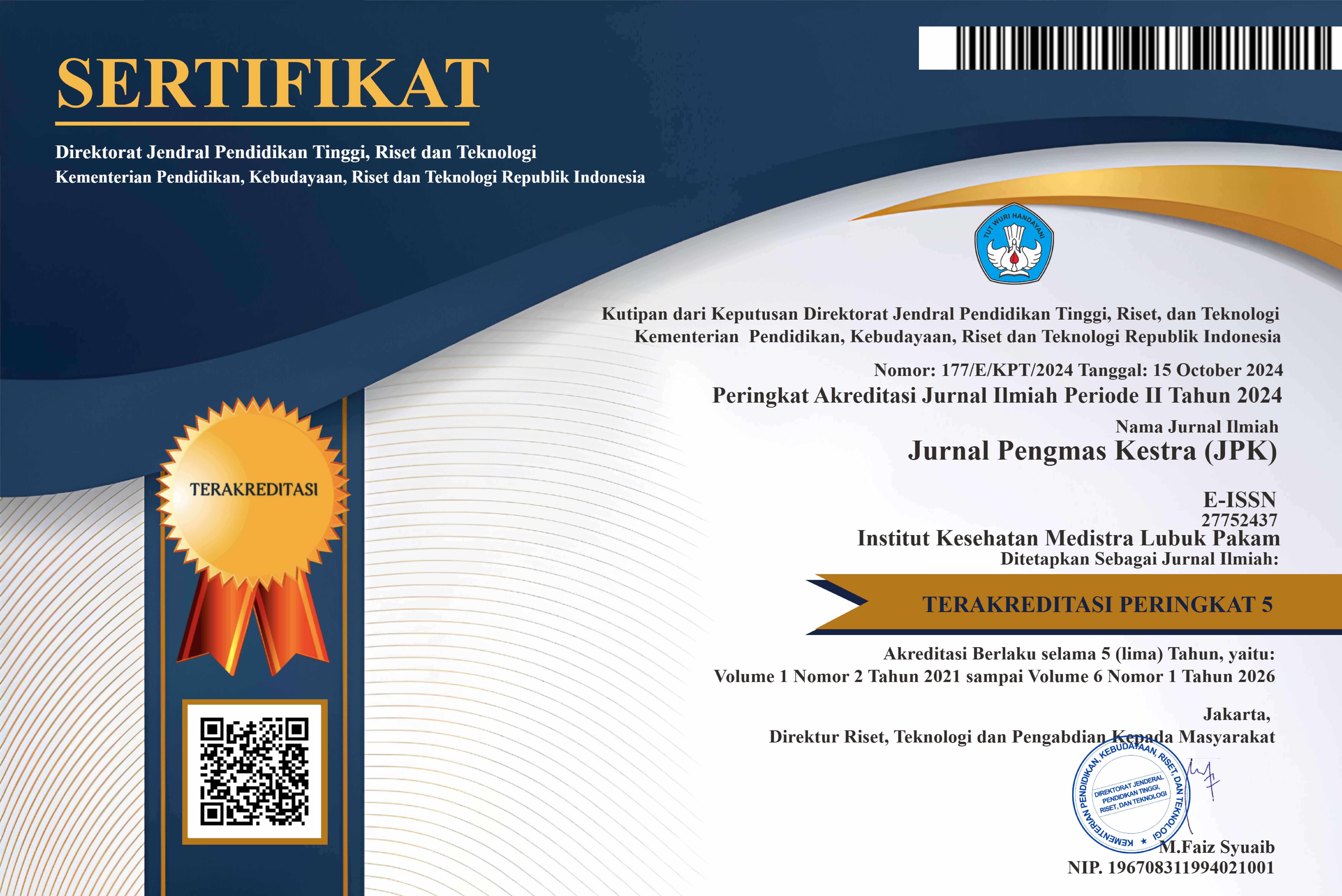Workshop Diagnosis of Escherichia coli on Well Water Samples
DOI:
https://doi.org/10.35451/jpk.v3i1.1725Keywords:
Eschericia coli, PCR, Well water, WorkshopAbstract
Diarrhea is an endemic disease in Indonesia and is also a disease that can potentially cause extraordinary events that are often accompanied by death. Escherichia coli is a commensal bacterium, intestinal pathogen and extraintestinal pathogen that can cause urinary tract infections, meningitis, and septicemia. Most of the E. coli bacteria are in the digestive tract of animals as well as humans and are normal flora, but some are pathogenic that can cause diarrhea in humans (Bettelheim, 2000). Water is very potential in the spread of various diseases, for example water contaminated by pathogens and drunk by humans can cause disease (water born disease). Food and water contamination has been identified as a potential source of the spread of Escherichia coli pathogenicity in humans. The method has the disadvantage of taking a long time, a large number of samples, and an incorrect reading method of results. PCR technique is one of the molecular techniques used to identify infectious diseases caused by Escherchia coli. This method has many advantages that can produce accurate, fast, specific product amplification, requiring a small number of samples. and this method can be used to overcome the weaknesses of conventional diagnostics (cultures). The purpose of this study was to socialize the detection of Escherichia coli bacteria in well water samples by culture and PCR methods. From the examination that has been done obtained the results of cultural examination obtained colonies that grow on the medium Mac Conkey To appear round, flat edges, smooth surface with the color of the colony, then the results of pcr examination obtained 239 bp, which means bacteria found from the isolation of well water samples in the bottom of the identic pakam with Escherichia coli.As well as workshop participants can follow and understand the materials submitted and also the examination procedures carried out.
References
Andrian, G. B., Fatimawali & Novel S. K. 2014. Analisis Cemaran Bakteri Coliform dan Identifikasi Escherichia coli pada Air Isi Ulang dari Depot di Kota Manado. Jurnal Ilmiah Farmasi Pharmacon. 3: 325-333.
Bettlelheim K.A. (2000). Role of non O157 VTEC. J. Appl. Symp. Microbiol. Suppl
Hannif, Sri Mulyani dan Kuschitawaty. (2011). Faktor Risiko Diare Akut Pada Balita. Jurnal Berita Kedokteran Masyarakat, Vol 27, hal 10-17.
Kementrian Kesehatan Republik Indonesia. (2011). Buku Pedoman Pengendalian Penyakit Diare. Direktorat Jenderal Pengendalian dan Penyehatan Lingkungan. Kementrian Kesehatan Republik Indonesia, Jakarta.
Monem MA., Mohamed EA., Awad ET., Ramadan AHM., and Mahmoud HA. (2014). Multiplex PCR as emerging technique for diagnosis of enterotoxigenic E. coli isolates from pediatric watery diarrhea. Journal of American Science, Vol 10 No (10).
Tutenel, A., Pierard, D., Jan, V.H., & L. D Zutteri. 2003. Molecular Characterization of Escherichia coli O157:H7 Contamination routes in a Cattle Slaughterhouse. Journal of Food Protection. 66(9): 1564-1569.
Downloads
Published
Issue
Section
License
Copyright (c) 2023 Visensius Krisdianilo, Vincentia Ade Rizky, Saadah Siregar, Asvia Rahayu

This work is licensed under a Creative Commons Attribution 4.0 International License.
Copyright in each article is the property of the Author.




















